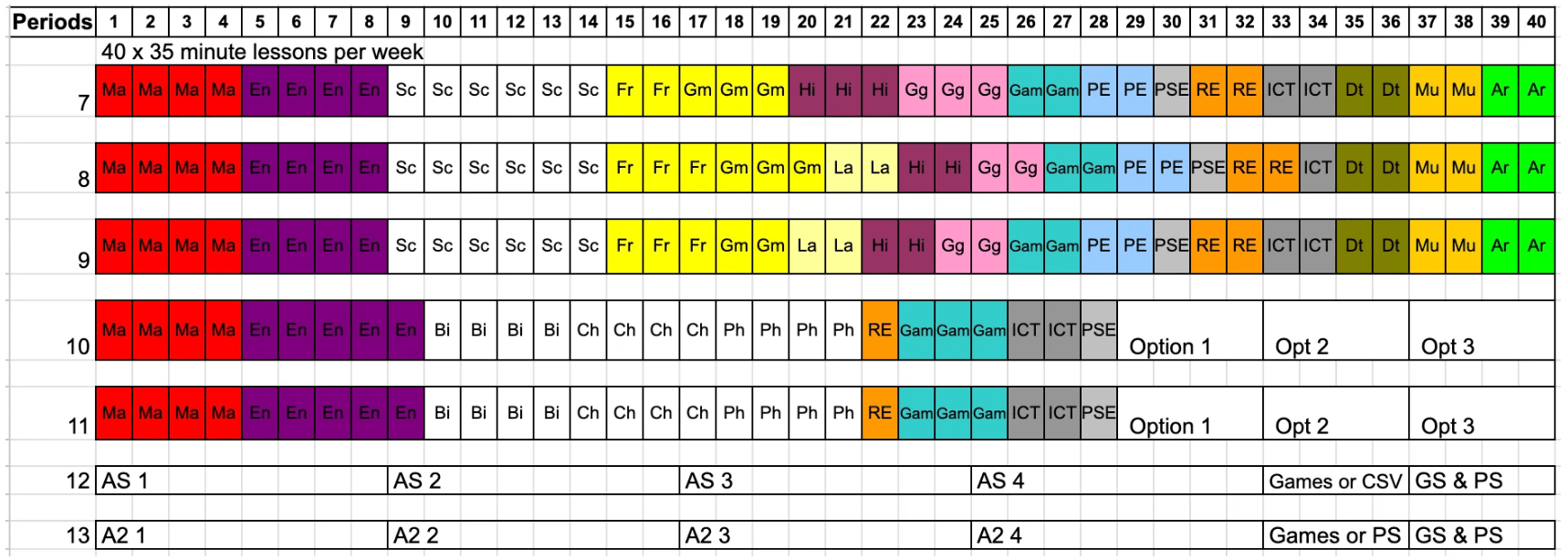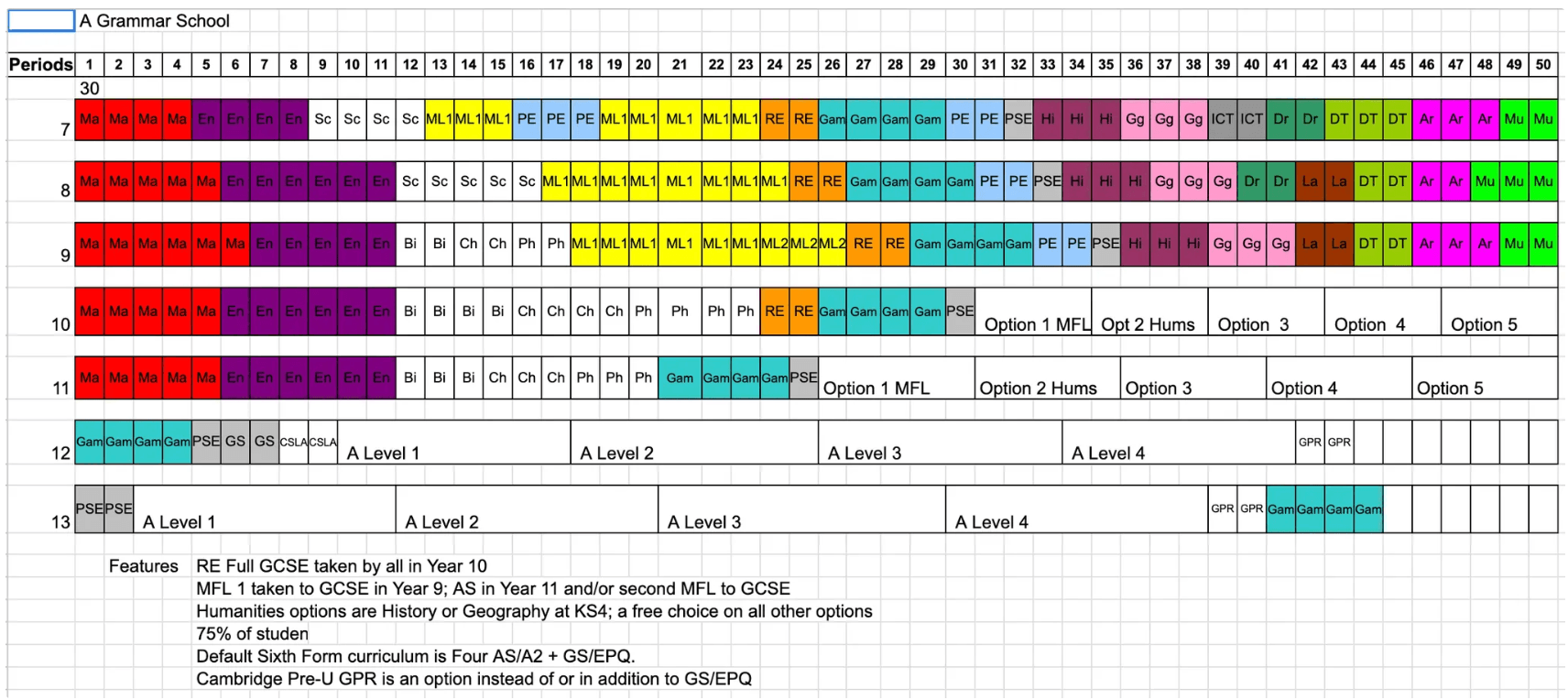Timetabling 101
Curriculum Model
One of the first steps in building a timetable is to design the Curriculum Model. In this guide, we'll look at what they are and how to create one.
What is a Curriculum Model?
A Curriculum Model is a way of showing the required teaching periods for each subject in each year group.
Here's an example from an 11-18 school with a 1-week, 30-period timetabling cycle:

From this Curriculum Model, we can see that:
- Years 7-11 require 4 periods of Mathematics per week
- Year 7-9 require 4 periods of English per week, while years 10-11 require 5
- In years 10-11, there are three option blocks, each of which occupies 4 periods
... and so on.
Multi-week cycles
Curriculum Models can easily be adapted to fit multi-week cycles. This next school, for example, has more period columns because it has a 2-week, 50-period cycle:

Multiple tracks
In larger schools, it's common to offer multiple academic "tracks" or pathways.
A Curriculum Model can easily be adapted to show this. Here's an example from an 11-16 school with two “tracks” or “bands” within years 8-11:

Are Curriculum Models essential?
Most timetabling software doesn’t require you to explicitly specify a Curriculum Model before building the Curriculum Diagram.
In our experience, however, most schools tend to have one anyway because they’re one of the first things Ofsted ask to see they’re a really useful planning tool.
In StudentSort, we recommend building a Curriculum Model because it provides a natural way to see the “big picture” of your school's timetable. It also provides some data points which are useful for validation in later steps of the timetabling process. For example, by entering “Year 7 need 5 periods of History” at the Curriculum Model stage, it provides the data point to be able to check (at a later stage) whether all Year 7 Maths teaching groups have been assigned the required 5 periods of Maths.
Examples
If you'd like to see more examples of Curriculum Models, take a look at this excellent Google Sheet which contains 40+ real-world curriculum models from UK schools.
(That's where the examples in this guide are sourced from.)